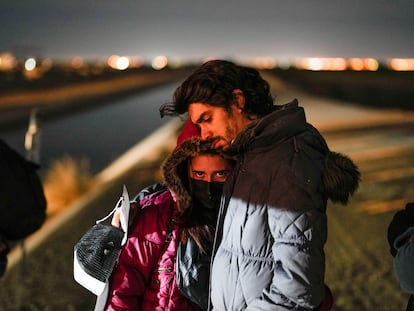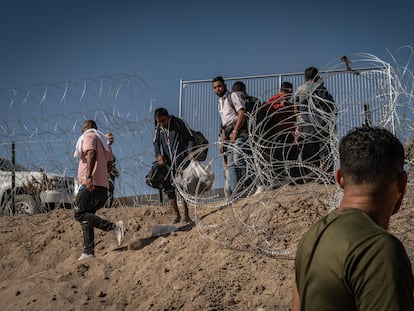Nicaragua’s Daniel Ortega profits handsomely from vulnerable Haitian migrants
The Sandinista regime is making millions from the mass influx of desperate travelers trying to make it to the United States
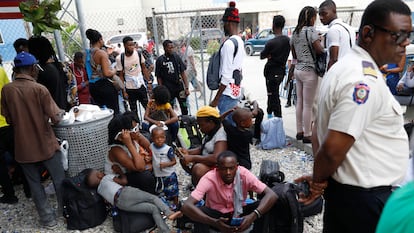

Managua’s Augusto C. Sandino International Airport had a busy month in October, with an average of 18 charter flights landing daily, mostly from Haiti. These flights carried thousands of Haitians who use Nicaragua as a transit point to reach the United States, avoiding the arduous journey through the Darién jungle between Colombia and Panama. This influx has provided the regime of Daniel Ortega and Rosario Murillo with a lucrative source of income, generating millions of dollars each month in aircraft landing fees and charges imposed on migrants.
Nicaragua does not require an entry visa for Haitians and Cubans. Manuel Orozco, a migration expert with the Inter-American Dialogue, reports that from August to October 2023, more than 260 chartered planes carrying over 30,000 Haitians arrived in Managua. “That is nearly 60% of all U.S.-Mexico border Haitian arrivals. A similar situation is found for flights from Havana to Managua, amounting to some 50 monthly flights in motion during 2023, that’s 5,700 passengers on average per month, 40% of the number of arrivals to the U.S.-Mexico border.”
The most profitable aspect of the Ortega-Murillo immigration business is the entry tax on Haitians, which they have also started applying to Cubans. As a standard requirement, every foreigner entering Nicaragua must pay a $10 tourist fee, except for citizens of the CA-4 Convention (Honduras, El Salvador, Guatemala and Nicaragua). But two sources affiliated with the Augusto C. Sandino International Airport confirmed that migrants are charged an exorbitant and arbitrary $150-$200 entry fee.
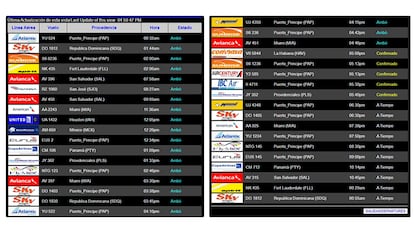
Another source from the government’s immigration department said, “An immigration official sets the fee charged to Haitians, which is typically between $150 and $200. These people are desperate to get to the United States and always end up paying to avoid detention. Many raised money for the trip by selling their homes and belongings, or from family members already in the United States. They get a handwritten receipt on a scrap of paper, granting them a five-day stay in Nicaragua. No other documentation is provided and sometimes their passports aren’t even stamped. The whole process is completely arbitrary and money can be easily skimmed since everything is paid in cash.”
If the 31,000 Haitians who entered Nicaragua recently each paid a $150 fee, the Ortega-Murillo regime has raked in $4.65 million from these vulnerable migrants.
A departure tax on empty planes
In just three days (October 20-22), 36 charter flights landed in Managua from Haiti, a country that has been mired in a severe sociopolitical crisis since July 2021, when President Jovenel Moïse was assassinated by Colombian mercenaries. Every one of these flights paid a steep $2,000-$3,000 landing fee, depending on the aircraft size and airport services used, such as the boarding ramp or stairs, baggage handlers, fuel surcharge, hangar use and more. “These charters coming from Haiti are charged an average of $2,000, which is the basic fee because there’s no luggage handling. People just come with a backpack and hop off the plane. Also, the landing fee depends on the size of the plane. Most of the aircraft from Port-au-Prince are small, like the Embraer 175, which has 50 to 75 seats,” said a source in the charter flight business.
Taking into account the daily average of 18 charters landing in Managua from Haiti, the Dominican Republic, and the Turks and Caicos, each paying a $2,000 landing fee, the daily revenue amounts to $36,000, or $1.08 million per month. The actual figure is probably higher because of other charter flights from Cuba and Kyrgyzstan that transited through Bulgaria with a layover in Managua. These larger planes were Airbus 330s.
Then there’s the departure tax on charter flights, a new wrinkle added after so many began arriving from Port-au-Prince. Euphemistically called the “Terminal fee for outgoing passengers,” our sources in the aviation industry say it’s an “inappropriate” additional charge of $44.23 that’s usually included in the round-trip ticket price. But it’s not supposed to be levied on one-way tickets like the ones purchased by thousands of migrants.
“They’ve come up with this new way to make more money by charging a departure tax, even though the charters return practically empty. It’s ridiculous, because most of these passengers actually leave by land to go to the United States,” said our source. Data from the Central Bank of Nicaragua (BCN) reveals the difference in passenger air arrivals and departures at Augusto C. Sandino International Airport in 2022: 634,800 passengers arrived by air, but only 312,400 departed. Multiplying the $44.23 departure tax by the recent influx of 31,000 Haitians yields $1.37 million in revenue.
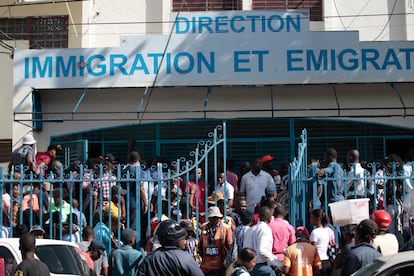
Warnings and advice from the U.S.
An EAAI risk analysis report reveals that the Sandino airport’s liquidity crisis ended in 2022, when its income grew by 95%. In that year, the airport turned a profit of $4.16 million, mostly due to the significant influx of Cubans on charter and commercial flights, and the post-pandemic resumption of some flights from the U.S. The airport faced a crisis due to the significant drop in tourism following the sociopolitical turmoil that started in 2018. Additionally, the stringent Covid-19 requirements imposed by Nicaraguan aviation authorities delayed airlines from resuming operations, while others canceled flights to Managua altogether.
On October 6, the United States expressed concern about the significant increase in charter flights from Haiti to Nicaragua amid the ongoing crisis in the poorest nation in America. Eric Stromayer, the chargé d’affaires at the U.S. Embassy in Haiti, warned Haitians to “think twice” about making the trip because “the path is uncertain, expensive and dangerous.”

Haitians “have better, safer and less expensive options to travel to the United States,” said Stromayer, citing the humanitarian parole program that allows citizens of Haiti, Nicaragua, Cuba and Venezuela to legally immigrate to the U.S. He said about 70,000 Haitians were able to enter the United States under this program as of August, “which is safe, orderly and free.”
Brian Nichols, the U.S. Assistant Secretary of State for Western Hemisphere Affairs, posted on X that he was “concerned by reports of a dramatic increase in Nicaragua-bound charter flights that facilitate irregular migration from Cuba & elsewhere to 🇺🇸. No one should profit from the desperation of vulnerable migrants — not smugglers, private companies, public officials or governments.” He warned that they are exploring the full range of consequences for those who facilitate this form of irregular migration.
“Nicaragua is weaponizing migrants to attack the United States,” said Manuel Orozco. “Ortega and Murillo have publicly stated that the United States is an ‘enemy, conspirator, and sponsor of coups,’ so they have intentionally facilitated this migration crisis.”
Sign up for our weekly newsletter to get more English-language news coverage from EL PAÍS USA Edition
Tu suscripción se está usando en otro dispositivo
¿Quieres añadir otro usuario a tu suscripción?
Si continúas leyendo en este dispositivo, no se podrá leer en el otro.
FlechaTu suscripción se está usando en otro dispositivo y solo puedes acceder a EL PAÍS desde un dispositivo a la vez.
Si quieres compartir tu cuenta, cambia tu suscripción a la modalidad Premium, así podrás añadir otro usuario. Cada uno accederá con su propia cuenta de email, lo que os permitirá personalizar vuestra experiencia en EL PAÍS.
¿Tienes una suscripción de empresa? Accede aquí para contratar más cuentas.
En el caso de no saber quién está usando tu cuenta, te recomendamos cambiar tu contraseña aquí.
Si decides continuar compartiendo tu cuenta, este mensaje se mostrará en tu dispositivo y en el de la otra persona que está usando tu cuenta de forma indefinida, afectando a tu experiencia de lectura. Puedes consultar aquí los términos y condiciones de la suscripción digital.
More information
Archived In
Últimas noticias
Most viewed
- Sinaloa Cartel war is taking its toll on Los Chapitos
- Oona Chaplin: ‘I told James Cameron that I was living in a treehouse and starting a permaculture project with a friend’
- Reinhard Genzel, Nobel laureate in physics: ‘One-minute videos will never give you the truth’
- Why the price of coffee has skyrocketed: from Brazilian plantations to specialty coffee houses
- Silver prices are going crazy: This is what’s fueling the rally
